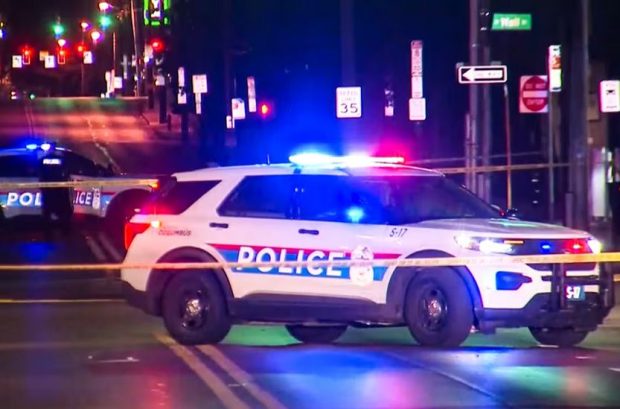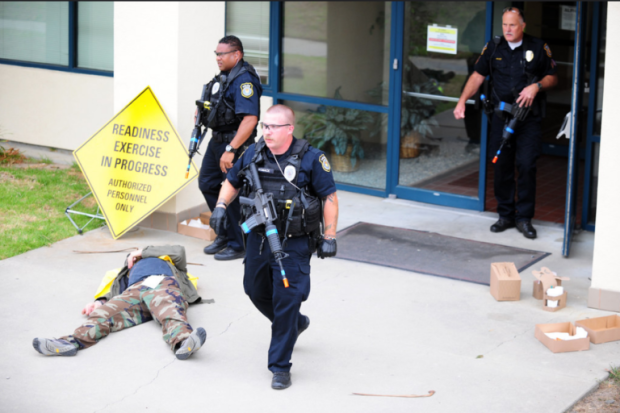It’s spring time. We are starting to see our annual rash of “mass shootings.” Take a look at these mass shooting events that have popped off in the last couple weeks.
3 killed and 15 hurt in a shooting at a park in New Mexico’s Las Cruces
2 dead, 4 injured after mass shooting in Washington neighborhood
Capitol police make arrests in Jackson shooting that killed 1, injured 7
4 injured in shooting near 6th Street; APD says no suspect in custody
Notice any trends in these shootings?

In looking at these events, it strikes me that while they are all reported as “mass shootings” they are very different in character from the active killer attacks many concealed weapons carriers and cops prepare for.
Because the attack characteristics are different, your response tactics should be different as well. Using your trained active killer response techniques in one of these “mass shootings” is likely to yield suboptimal results and may make it more likely that you are injured or killed.
When the shots start going off, how do you tell the difference between the two types of events?
In the “mass shootings” reported above, YOU are not likely the target. You can most certainly catch a stray round if you hang around in the area, but the shooters are firing at other people. Some additional characteristics define these events:
– These shootings usually occur in urban areas where large groups of young people (often affiliated with street gangs) are gathered outside. The gathering could be a formal event or something informal like a party, cookout, or “street takeover”.
– They often happen late at night.
– There is usually more than one shooter.
– There is usually some type of disturbance (yelling, arguing, etc) before the shooting starts.
– The shooters are usually armed with handguns
– The shooter(s) will be identified with some of the people in the groups involved and will likely be communicating with some of the other people at the shooting scene
Think of these events more like a “gang fight with rounds flying everywhere” rather than an active killer attack where a single person is shooting everyone methodically while trying to amass a high body count.
How should you respond to one of these “mass shootings” should you find yourself in the vicinity?
When you hear shots nearby, immediately get down on the ground or behind cover. Assess where the shots are coming from and plan a path of retreat in the opposite direction, ideally moving between large pieces of cover as you make your escape. That’s it. There is absolutely nothing else you should do.
These are young thugs fighting other young thugs. These are gang bangers fighting other gang bangers. These are drunken idiots who decide to whip out a pistol when they are insulted. None of those situations involves you in any way, even if you are in danger of catching an errant bullet.
They don’t want to shoot you. The only way you will get hit is by accident. Don’t go looking for trouble. Don’t try to intervene. There is no “innocent third party” to protect. Let the dumb shits shoot each other. You don’t have to play their game.
Keep your weapon holstered. It’s OK to have your hand on your holstered gun in the event you need to use it, but you should only draw if one of the shooters is directly threatening you/your family or is impeding your escape.
And you don’t stick around to “be a good witness” either. If these jackasses get arrested, do you want them getting you and your family’s names, addresses, places of employment, and phone numbers? As soon as their court-appointed attorney files for discovery, all of that information goes directly to them. Now you’ve become an active player in their game. And in that game, they don’t have the same rules you operate by.
A couple years ago, my friend’s high school aged son was at a mall where there was a gang shooting similar to the ones I linked to earlier in this article. A ricocheting bullet hit him in the arm, but didn’t penetrate his jacket. He was listed on the police report as a victim and the boy was issued a subpoena to testify against the accused who had fired the shots. Even though my friend’s son didn’t see anything and could provide no useful information for the prosecution, he was still ordered to appear in court. Does that sound like a good plan to you? Would you instruct your teenage child to “be a good witness?” Not me.
Don’t involve yourself in this stupidity. It will only harm you in the long term. If you intervene, you will likely either get shot by the thugs, shot by the cops, sued by the person you shoot, or arrested. If that doesn’t happen and you make a statement to the cops you take the chance of being hunted down by the arrested party’s crew at a future date before trial.
Say it again with me: “Not your people, not your problem.”
Get out. Not playing is the only route to victory.
How is that different from an active killer attack?
– The shooter will likely be alone
– The shooter will probably be armed with a long gun
– The shooter may be wearing “tactical” clothing, a helmet, or a tactical vest
-The shooter may be filming with a cell phone or go-pro type camera during the attack
– The shooter will not be communicating with other people at the site of the shooting
– The shooter will be trying to shoot at everyone in the area or may be targeting a specific victim gender or ethnicity
– The attack will seem less random and chaotic
In an active killer attack, the same strategies outlined above will still be a great option. Additionally you might consider hiding (if in a location that can be secured or if your mobility is compromised) or attacking the killer. Read my article Active Killer Response Options for Armed Citizens for a more detailed discussion about adopting an optimal response strategy for this alternate form of violence.
The smart practitioner will study these varied types of attacks, understand their differences, and plan an optimized response strategy for each.


